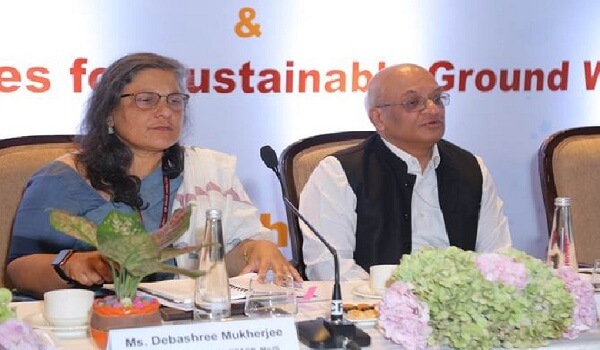5th meeting of the National Level Steering Committee (NLSC) of Atal Bhujal Yojana (ATAL JAL) was held to review the overall progress of the scheme.The World Bank has been involved in the review of the program. The committee encouraged states to integrate Water Security Plans (WSPs) into the Gram Panchayat Development Plans which will ensure the sustainability of the scheme’s approach even after the program’s completion.
Atal Bhujal Yojna
- ATAL JAL is a Central Sector Scheme for facilitating sustainable ground water management with an outlay of Rs. 6000 crore.
- It is being implemented by the Ministry of Jal Shakti .
- The scheme is being funded by the Government of India and the World Bank on a 50:50 basis.
- The entire World Bank’s loan component and central assistance will be passed on to the States as grants.
- It aims to improve the management of groundwater resources in select water stressed areas in identified states viz. Gujarat, Haryana, Karnataka, Madhya Pradesh, Maharashtra, Rajasthan and Uttar Pradesh.
- ATAL JAL promotes panchayat led groundwater management and behavioural change with a primary focus on demand-side management.
Status of Groundwater Depletion in India
- Groundwater Depletion in India is a major concern because it is the primary source of drinking water. Some of the main causes of groundwater depletion in India include over-extraction of groundwater for irrigation, Urbanisation, and Climate Change.
- India is the world’s largest user of groundwater, exceeding the use of the United States and China combined according to recent UN report .
- According to the Central Ground Water Board (CGWB) of India, approximately 70% of the total water used in India is from groundwater sources.
- However, the CGWB also estimates that around 25% of the country’s total groundwater extraction is unsustainable, meaning that it is being extracted at a faster rate than it can be replenished.
- Overall, groundwater depletion in India is a serious problem that needs to be addressed through sustainable water management practices, such as improved irrigation techniques and conservation efforts.
Major Causes of Groundwater Depletion in India
Over-Extraction of Groundwater for Irrigation
- Irrigation accounts for around 80% of total water use in India, and much of this water is sourced from groundwater.
- As demand for food continues to grow, more and more groundwater is being extracted for irrigation, leading to depletion.
- According to the UN’s Interconnected Disaster Risks Report 2023, 78% of wells in Punjab are considered overexploited, and the north-western region as a whole is predicted to experience critically low groundwater availability by 2025.
Climate Change
- Rising temperatures and Changing Precipitation Patterns can alter the recharge rates of Groundwater Aquifers, making them more vulnerable to depletion.
- Droughts, flash floods, and Disrupted Monsoon Events are recent examples of climate change events that are placing pressure on India’s groundwater resources.
Poor Water Management
- Inefficient use of water, leaky pipes, and inadequate infrastructure for capturing and storing rainwater can all contribute to groundwater depletion.
Decrease in Natural Recharge
- The natural recharge of groundwater aquifers can be decreased by factors such as Deforestation, which can lead to Soil Erosion and reduce the amount of water that is able to seep into the ground and replenish the aquifers.

